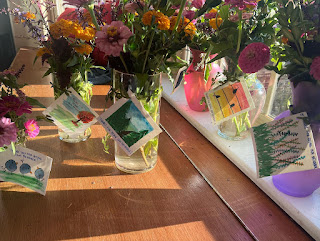Transform Your neighborhood into a Connected Community.
As soon as I heard the news of its release, I pre-ordered Cormac Russell and John McKnight’s book, “The Connected Community: Discovering the Health, Wealth, and Power of Neighborhoods.”
McKnight is the co-creator of Asset Based Community Development (ABCD) and author of “Abundant Communities.” That book has some short-comings but it is the standard for understanding ABCD. The pre-sale marketing for “Connected Community” promised to apply ABCD in neighborhoods more deeply.
So, of course, I bought it. That whole idea is at the
foundation of my Engaged Neighbor Project.
The book is organized into three distinct
but connected sections: Discover, Connect, and Mobilize.
The
section on Discover focuses on the importance of what is already strong in your
neighborhood (gifts or assets). Often, assets are in plain sight, and we just
take them for granted.
The section closes with three simple and effective tools.
For Connect, the author encourages us to connect
with those in our communities who are already skilled and well-placed. These
are the people who get things done in your neighborhood. These are the people
who always seem to know someone who can help. In my opinion, this chapter is focused on
social capital.
This section also outlines the seven
functions of Connected Communities. In case you are curious, the seven
functions of a connected neighborhood or community are: enabling health,
ensuring security, stewarding ecology, shaping local economies, contributing to
local food production, raising our children and co-creating care.
The Mobilize section outlines how assets and
connections can be organized to work together for positive change or
neighborhood improvement or leadership.
The book comes with discussion and resource guides. Each section also includes a brief table describing what the disconnected community looks like, what the connected community looks like and Keys to the Good Life.
"Benjamin Franklin, in The Way to Wealth (1758), wrote:
For want of a nail the shoe was lost,
for want of a shoe the horse was lost,
for want of a horse the rider was lost,
being overtaken and slain by the enemy,
all for want of care
about a horse-shoe nail.
It's a simple poem with a profound message: pay
attention to the small stuff, because it has unforeseen yet important impacts
on the bigger stuff.
Each time we go out of our way to encourage,
support, share, and enjoy a neighbor, we are paying attention to the small but
important things on our street. In doing so, we are helping to transform our
neighborhood into a vibrant neighborhood on our journey toward begin a
Connected Community.
###
Does this article make you interested in taking the Engaged Neighbor pledge? Five categories and 20 principles to guide you toward becoming an engaged neighbor. Sign the pledge online at http://engagedneighbor.com.
Contact the blog author, David L. Burton at dburton541@yahoo.com.





Comments
Post a Comment